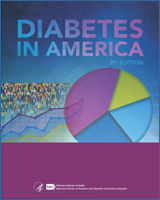The oral microbiome in dental plaque (biofilm) causes infection in the gingival tissues that respond with inflammation. In particularly susceptible individuals, hyperinflammation will occur with subsequent breakdown of the alveolar bone surrounding the teeth in a vicious cycle fed by the dental plaque and the bacteria residing in the increasingly deepening periodontal pockets (spaces between the teeth and the surrounding periodontal tissues). The inflammatory response will occur both locally in the periodontium, but also systemically due to the circulating inflammatory mediators from both the local infection, as well as elicited by the bacteremia with periodontal bacteria and their endotoxins/lipopolysaccharides (LPS).
Contributing directly to the hyperinflammation is probably sugar added to the diet, which seems to cause both indirect negative effects via adiposity and also directly triggers the inflammatory cascade. Chronic overexpression of proinflammatory mediators, such as cytokines (e.g., IL, interleukin; TNF, tumor necrosis factor), can contribute to insulin resistance and stimulate the liver to express acute-phase reactants, such as C-reactive protein (CRP), serum amyloid A, and fibrinogen, which contribute to hyperglycemia.
The hyperinflammatory state also contributes to pancreatic beta cell damage, leading to hyperglycemia, which causes oxidative and other cellular stress that—via energy deprivation represented by the mitochondrion and the hyperglycemia-driven increased activation of leukocytes represented by the neutrophil—contributes via free radicals and other reactive species (ROS) to neuropathy and atherosclerosis, for example.
The advanced glycation endproducts (AGEs) irreversibly formed due to the hyperglycemia activate their chief signaling receptor (RAGE) and cause further inflammatory dysfunction, cellular stress, and other changes to important periodontal cells that promote apoptosis (cell death) and decrease bone formation, resulting in further periodontal bone destruction.
Finally, overarching modifiable and unmodifiable contributing individual factors should be mentioned, as they may influence the outcomes and account for differences between individuals. Importantly, the following are risk factors for both periodontitis and diabetes: age, alcohol consumption, heredity, hypertension, hyperlipidemia, obesity, low socioeconomic status (SES), smoking cigarettes, stress, and poor nutrition, including vitamin D deficiency.
Image attributions:
- a)
Courtesy Dr. Iain C. Chapple: dental plaque (biofilm), electron microscopic image;
- b)
Courtesy Dr. Amin ur Rahman: clinical case of severe periodontitis;
- c)
Wikimedia Commons:
- 1)
dental plaque (biofilm), clinical image, 2013 (“onetimeuseaccount”/anonymous): https://commons.wikimedia.org/wiki/File:Gingivitis-before.JPG;
- 2)
liver by Dr. Mikael Häggström, 2010: http://commons.wikimedia.org/wiki/File:Liver_%28transparent%29.png;
- 3)
pancreas by Dr. Mikael Häggström, 2010: http://commons.wikimedia.org/wiki/File%3APancreas_2.png;
- 4)
mitochondrion by Nevit Dilmen, 2010: https://commons.wikimedia.org/wiki/File:Mitochondria.svg;
- 5)
neutrophil by Bruce Blaus, 2014: Blausen.com staff. “Blausen gallery 2014.” Wikiversity Journal of Medicine. doi: 10.15347/wjm/2014.010. ISSN 20018762. https://en.wikiversity.org/wiki/WikiJournal_of_Medicine/Medical_gallery_of_Blausen_Medical_2014#/media/File:Blausen_0676_Neutrophil.png;
- 6)
diabetic neuropathy by Bruce Blaus, 2013: Blausen.com staff. “Blausen gallery 2014.” Wikiversity Journal of Medicine. doi: 10.15347/wjm/2014.010. ISSN 20018762. https://en.wikiversity.org/wiki/WikiJournal_of_Medicine/Medical_gallery_of_Blausen_Medical_2014#/media/File:Blausen_0311_DiabeticNeuropathy.png.

